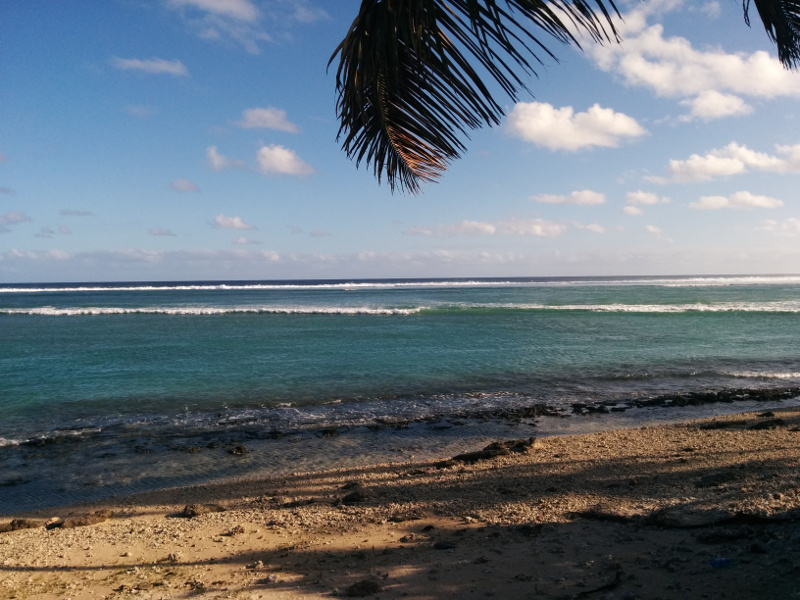What are they
Infragravity waves typically describes waves with a wave period between 25s and 300s (see wikipedia for more details). On reef flat environments, these infragravity waves are the most energetic oceanographic process responsible for a large proportion of sediment transport. Infragravity waves also contributes significantly to coastal inundation during large wave events.
On the Coral Coast of Fiji, infragravity waves are mainly generated by wave group breaking on the reef crest. The mass of water forced on the reef by the wave group then moves towards the shore like a mini-tsunami. During fair weather, infragravity waves are hardly noticeable. During large wave events, infragravity waves can be seen breaking in the middle of the lagoon and inundating the beach and sometimes the backshore. These are locally known as loka waves.
Infragravity waves measurements
In 2013, the WACOP project installed oceanographic instruments to monitor the infragravity on the Coral Coast of Fiji. During a large wave event on the 6th June 2013, the team recorded very high infragravity waves. Luckily, the tide was not very high and no inundation occurred. The measurement collected proved extremely valuable to better understand infragravity waves and how they can be responsible of coastal inundation.
The Figure above shows the water level as they were recorded on the reef crest (Black line) and near the shore (Blue line) during the peak of the tide in the 6th June 2013. The black line shows swell wave breaking. We can tell that they are breaking because they are about a quarter of their size as measured offshore and they are very asymmetrical. The waves in this case were roughly 16-18s period (you can count 28-31 in a 500s interval) and quite well grouped (you may identify 9-13 groups ). You can also notice that under each passing group there is a underlying bump in the water levels. This is the infragravity wave.
In contrast with the water level recorded at the reef crest (Black line), the water levels recorded at the shore (Blue line) does not show any swell. We can see the long oscillation of the infragravity waves (12-13) with a period between 150-200s. You can notice that the infragravity at the shore are peak later than they do on the reef crest (Approx. 100s later), this is because it takes time for the infragravity waves to reach the shore. There are some short period oscillations but there are much shorter period (1-3s) than the swell (16-18s). These short period oscillations are the undulating bore at the front of the infragravity waves, they are the same type of oscillation visible on tidal bores and tsunami bores. They are caused by the fact that the infragravity wave travel in very shallow water and therefore the front of the waves travels slower than the back causing some instability and sometimes a fully turbulent bore (See picture below).
